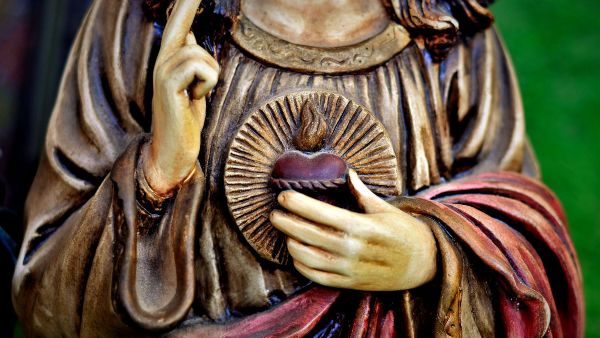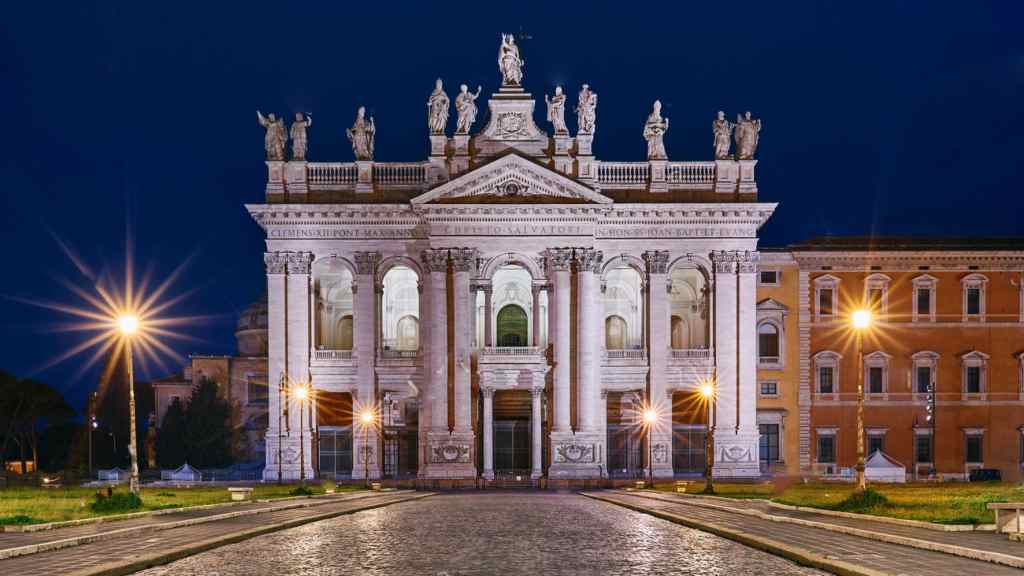Nazareth, or Natsrat, as its name is pronounced in Hebrew, is the cradle of Christianity, the city where, according to tradition, the angel Gabriel announced to Mary that she was going to conceive by the Holy Spirit and the place where Jesus spent his childhood and youth. The root of the word Nazareth (Natzrat or Natzeret in Hebrew; al-Nāṣira or al-Naseriyye in Arabic) refers to the meaning of “springing up,” as St. Jerome observed, but also of “being on guard.” The geographical position of the small town in the lower Galilee confirms its vocation as an observation site. Nazareth is located along the southernmost slope of the complex of hills that descends from Lebanon, in an elevated position above the front plain of Izreel, the valley mentioned most times in the Bible is also known in the Greek pronunciation Esdrelón, almost 350 meters of altitude.
Nazareth, has an area of 16,5 km2, and an average altitude of 374 meters above sea level, it is located in the hills of Lower Galilee, in a valley surrounded by mountains that is home to several of the most important Christian sites in the world. It is a city full of religion and faith, spirituality and holiness, but it also has a rich history, fascinating archaeological remains, modern culture and all the charm of the Middle East.
Nazareth, which began as a small Jewish town about 2.000 years ago, after a few centuries became a stronghold of Christianity in the Byzantine period. During that time the name of Nazareth became famous throughout the world, and the desire to see the place where the Virgin Mary and Jesus Christ lived made it a place of pilgrimage. These visits led to the construction of the city's first church, the Church of the Annunciation, in the place where according to tradition the house of Joseph and Mary was located. Many other churches were later built in the city, only to be destroyed and rebuilt under Muslim and Christian domination over the centuries. In the 30th century, Nazareth gained renewed interest, Christians returned to live there and rebuilt churches and monasteries. Today it is the largest Arab city in Israel and has nearly XNUMX churches and monasteries, as well as mosques and ancient synagogues.
Taking a tour of Nazareth is like reliving its various periods. Each era has left a powerful symbol that has become an attraction and popular tourist spot in the modern era. Most of these places are concentrated in the Old City, built in the mid-19th century with a charming architectural style typical of the Middle East. Walking through its narrow streets of picturesque houses is a surprising experience, and it is worth walking slowly to enjoy its beauty.
In this text, we will explore the best there is what to see and do in Nazareth, from the most sacred religious sites to its charming markets and delicious cuisine.

1. Basilica of the Annunciation
We will begin our trip at the Basilica of the Annunciation, one of the most important sites in Nazareth. The Basilica of the Annunciation is a Roman Catholic temple, managed by the Franciscans. Built between 1960 and 1969 by the Italian architect Giovanni Muzio, on the remains of an old Byzantine church that venerated the place where Jesus lived his early years with Mary and Joseph. It is the largest church in the entire Middle East, has the title of Minor Basilica, awarded by the Pope, and is considered one of the most revered liturgical places in Christianity. The basilica consists of an upper and a lower church. The upper one is more modern, decorated with mosaics of the Virgin Mary and the Child Jesus, given by different Catholic communities around the world, including one from Spain in the temple and two exterior ones on the walls of the patio. On the ground floor, there is the Grotto of the Annunciation where Mary's house was and the ruins of two churches, one from the Byzantine period from the XNUMXth century and another from the Crusaders from the XNUMXth century. The Christian faith believes that it is located on what was Mary's home, and in the place where the Annunciation took place. On the other hand, the Greek Orthodox say that the angel Gabriel did not appear to Mary in her house, but rather it was at a spring in Nazareth, where she went to collect water. In the outdoor patio, several mosaics of virgins from all over the world are displayed.
2. Church of Saint Joseph
Near the Basilica of the Annunciation is the Church of Saint Joseph, a site also very important in the history of Christianity, it is a neo-Romanesque Franciscan church, built in 1914. This church was built on what is believed to have been the house and the workshop of Joseph, the earthly father of Jesus, beneath it extends a gallery of caves (it is believed that in the past it was used as a storage point for grain, oil and wine). The interior of the church is simple, but it reveals a lot light, thanks to the white stone columns that fill the room.
3. Annunciation Greek Orthodox Church
According to the Greek Orthodox, it was here that the Annunciation took place, while Mary brought water from the spring, located under this temple. The church is striking for the frescoes that its walls contain. In the crypt of the church there is a spring that is full of coins and offerings, brought to the place by pilgrims
4.The Souk of Nazareth
Once we have explored the sacred places, it is time to immerse yourself in the vibrant atmosphere of the Souk of Nazareth. This traditional market is a feast for the senses, with colors, smells and sounds that will envelop you. Here you will find a wide variety of local products, from exotic spices to clothing and crafts. Be sure to try some of the traditional sweets, such as baklavas and knafehs, which are irresistible.
5. Precipice Mount
If you are looking for a stunning panoramic view of Nazareth, Mount Tabor and the Jezreel Valley and also a place to hike and enjoy nature, Precipice Mount is the perfect place. The Mount of the Precipice or Mount Kedumim also known as the Leaping Mountain is located in the Lower Galilee, 395 meters above sea level, it is near the cities of Nazareth Illit and Nazareth. This is where the Christian faith thinks that Jesus was rejected by the people of Nazareth. Nazareth did not accept Jesus as the Messiah and they tried to push him down the mountain, he passed through them and left. (Mark 6,1:6-13,54, Matthew 58:4,16-30 and Luke 80000:10000-XNUMX). At the foot of this mountain is the Oafzer cave, where Neolithic remains from the Mosterian period (XNUMX-XNUMX years) have been found.
6. Terra Sanctae Museum of Nazareth
From the Bronze Age to the Roman period, from the Crusader era to the modern era: the Terra Sancta Museum of Nazareth recounts all the stages of the territory where the current Marian sanctuary is located. The archaeological museum, created after the 1950s excavations at the Basilica of the Annunciation and the Church of St. Joseph, is a stop not to be missed by the many pilgrims who visit Nazareth every day. It is a complex of cave houses, which constitute the remains of a village from the 1st century AD. Objects from that period, but also objects dating from the First and Middle Bronze Age, are preserved in the adjacent museum room.
The large number of ceramic pieces preserved by the Franciscans shows that the place was already inhabited since 1000 BC, in the time of King David.
Among the objects of great value on display is also the very important XE MAPIA inscription, “Khaire Maria”, that is, Ave or Maria. This is the oldest testimony of the name of the Virgin (before 324), inscribed in Greek at the base of a column.
7. Temple - Nazareth Synagogue
The date of construction of what is known as the Synagogue Church, located in the oldest area of the Hebrew city of Nazareth, is not clear. Apparently, it was built on a 12th century crusader temple, whose remains are one and a half meters below the ground and currently serve as a crypt. According to Christian tradition, this in turn would have been built on the site of the synagogue in which Jesus Christ delivered a sermon declaring himself the Messiah to the Jewish people, an episode narrated in the Gospels. The Synagogue Church is dedicated to the Greek-Catholic cult, whose monks replaced the Franciscans who led it until the 18th century.
8. Nazarene Gastronomy
The gastronomy of Nazareth is a delicious mix of Arab, Jewish and Mediterranean influences. You can't visit Nazareth without trying dishes like shawarma, falafel, hummus and sabich. Also, be sure to try some of the local dishes, such as musakhan, which is roasted chicken with caramelized onions and spices, served on Arabic bread.
9. Old Nazareth Village
To get a sense of what life was like in Nazareth in biblical times, visit the Antigua Nazareth Village. This archaeological site recreates a village from the time of Jesus, with houses, workshops and actors dressed in period costumes that will transport you to the past and help you understand daily life at that time. Pastors, synagogue priests or washerwomen will welcome you at Nazareth Village.
In short, Nazareth is a city full of history, spirituality and culture. From its religious sites to its lively markets and delicious cuisine, there is much to explore and enjoy in this corner of Israel. Whether you are looking for a spiritual, cultural experience or simply an adventurous trip, Nazareth has much to offer all visitors. No matter what your main interest is, a trip to Nazareth will be unforgettable and enriching.




